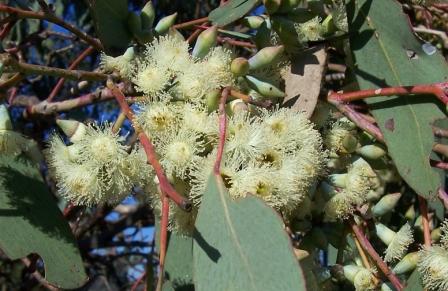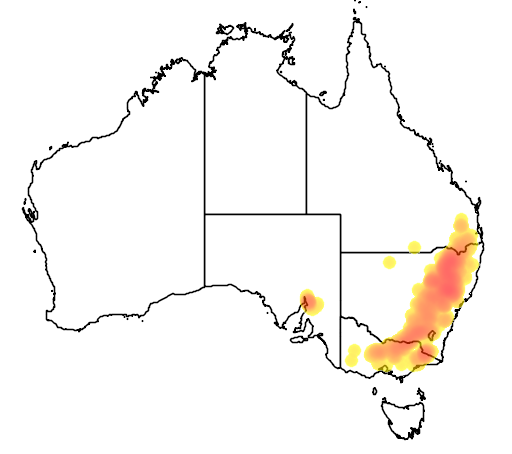Description
Common names
White Box.
Scientific names
Eucalyptus albens.
Family
Myrtaceae.
Genus
Eucalyptus.
Name origin
Albens, from Latin alba, white, referring to general whitish appearance.
Rainfall
400mm.
Growth rate
Moderate.
Growth height
Up to 25m.
Presence in Australia
Widespread in most catchments west of Hume Highway. Also noted in areas east of the Hume Highway Yarra Yarra; Four Mile; Lunts Sugarloaf; Snowball Stony; Yaven Creek; Murraguldrie; Lower Gilmore-Sandy and Brungle Bridge-Gundagai.
This specie has been identified in the following Australian states: Qld, NSW, ACT, Vic, SA.
Habitat
Grassy or sclerophyll woodland on range of soils, usually of higher fertility. Often dominant tree species.
Habit
Tree to 25m high with grey bark with whitish patches. Large crown of dull, grey-green leaves.
Similar species
Distinguished from Grey Box (E. microcarpa) by its blue-grey adult leaves, which are generally wider, and its larger glaucous (white-waxy) buds and fruit. Grey Box has greener leaves and smaller buds and fruit, both of different shape to those of White Box.
Site preference
Relatively fertile, well-drained soil. Tolerates short periods of inundation and drought. Moderately frost tolerant.
Characteristics
Moderate growth rate.
Flowering
Creamy-white, May-Sep. Heavy flowering usually every 2-3 years.
Seed collection
Throughout year, although summer and autumn best.
Propagation
From seed (±235 viable seeds per gram), which germinates best at 250C.
Regeneration
From seed, during favourable seasons such as wet summers, particularly in absence of competitive exotic grasses. Establishes reasonably well when direct seeded.
Shade and shelter
Useful medium to high-level cover in windbreaks. Excellent shade for livestock and dwellings.
Land protection
Useful for recharge control plantings as uses large amounts of ground water. Useful in erosion control due to large spreading roots.
Fuel
Excellent. Burns very well, for long periods due to its density.
Timber
Hard, heavy, durable and pale coloured. Similar quality to Grey Box, with similar properties. Density about 1100 kg/m3. Used for fencing and farm constructions.
Wildlife
Excellent habitat. Flowers important nectar source for birds such as honeyeaters, including the Regent Honeyeater, and parrots, including the Swift Parrot, over winter when other nectar sources are scarce. Food source for gliders, native moths, butterflies and other insects, which provide food for insect-eating birds. Hollows provide refuge and nesting sites for many birds and mammals, including the Sugar Glider and Squirrel Glider, which obtain sap from trunks.
Ornamental
Very attractive for larger gardens and parks.



